Have a group conversation in Outlook
Having a group conversation is similar to having an email thread. You can start a new conversation with the group members or reply inline to a message. Conversations are stacked inside your group workspace, and when you select one, you'll see the original message plus all the replies in sequence from oldest to newest. Members who are following the group will also receive conversations in their personal inbox.
Here are some facts about group conversations:
-
Anyone in your organization can start a group conversation.
-
For a public group, anyone in your organization can read and respond to the group's conversations.
-
For a private group, only group members can participate in the conversation.
An Office 365 subscription is required to use Groups.
For group conversation instructions, pick your version of Outlook below.
- Choose your version of Outlook
- Outlook on the web
- Outlook 2016
- Outlook for Mac
Create a conversation
-
In the navigation pane, under Groups, select your group.
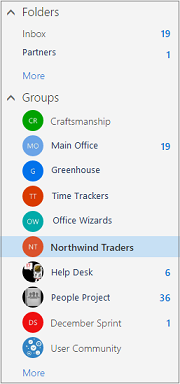
-
Select New.

-
Add a subject and type your message.
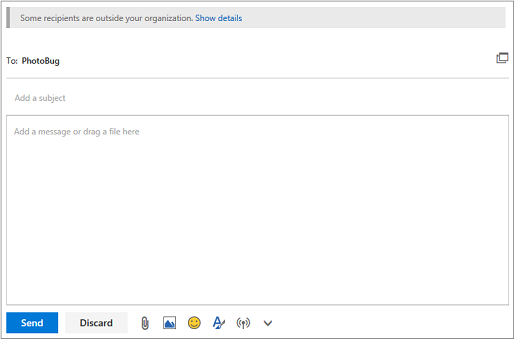
If guests are part of your group, you might see this message informing you that some recipients are outside of your organization.

If the tenant admin has restricted guest access to group conversations and calendar invitations, you'll see this message:

-
Select Send.
Tip: You can also send an email to a group from your personal inbox. Just add the group's alias in the To line in your email.
Reply to a conversation
-
To reply to a conversation, select the conversation >
 > Reply all.
> Reply all.
Tip: If you like the message, select the  icon to show your support.
icon to show your support.
Forward a conversation
When forwarding a conversation, you'll send a copy of the conversation as an e-mail message. You can send it to a group or to individuals inside or outside of your organization.
-
Select a message in the conversation.
-
Select
 > Forward.
> Forward. -
Type the recipients' email addresses and your message to them.
-
Select Send.
Delete a conversation
Only group owners can delete conversations. How do I know if I'm a group owner? It's not possible to delete multiple conversations so you'll have to delete them one at a time.
-
Select the conversation you want to delete.
-
At the first message in the conversation, select
 > Delete conversation.
> Delete conversation. -
Select Yes to confirm.
Create a new conversation
-
In the navigation pane, under Groups, select your group.
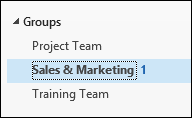
-
Select New Conversation on the upper left corner of the ribbon.
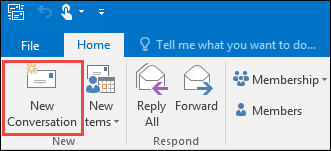
Notice the group's alias is automatically added in the To line.

-
Type your message, add any attachments, and select Send. All the members of the group will receive your email.
Tip: You can also send an email to a group from your personal inbox. Just add the group's alias in the To line in your email.
Reply to an existing message
-
To reply only to the sender, right-click a message and select Reply.
Your message is sent only to that person, and not the group.
-
To reply to the group, either right-click the message and choose Reply all, or type in the Add a message box in the reading pane and select Send.
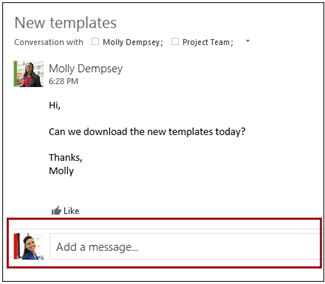
Tip: If you like the message, select the  icon to show your support.
icon to show your support.
To use Office 365 Groups in Outlook 2016 for Mac, make sure Outlook is activated with a qualifying Office 365 subscription. Groups is not available yet for retail or volume licenses.
Create a new conversation
-
Choose a group in the folder pane.
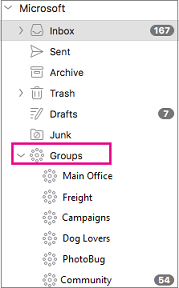
-
Select New Email on the upper left corner of the ribbon.

-
Type your message and select Send. All group members will receive your email.
Tip: You can also send an email to a group from your personal inbox. Just add the group's alias in the To line in your email.
Reply to an existing message
-
To reply only to the sender, select the Reply button on the ribbon.
Your message is sent only to that person, and not the group.
-
To reply to the group, select the Reply all button on the ribbon.
Related Topics
Learn about Office 365 groups
Create a group in Outlook
Join a group in Outlook
Guest access in Office 365 Groups
Delete a group
Delete a conversation in Outlook
No comments:
Post a Comment